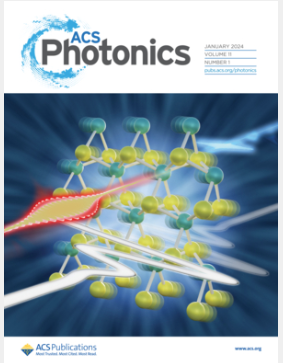Determination of the Absolute Concentration of Rayleigh Particles via Interferometric Scattering Microscopy
IF 6.5
1区 物理与天体物理
Q1 MATERIALS SCIENCE, MULTIDISCIPLINARY
引用次数: 0
Abstract
Nanoparticles play vital roles across healthcare, electronics, and energy, where their nanoscale dimensions enable unique functionalities, such as crossing biological barriers to enhance drug delivery. However, this same small size also raises safety concerns, making accurate characterization essential, especially in biomedical applications. Traditional techniques, including dynamic light scattering and mass spectrometry, often fall short in sensitivity, resolution, and versatility. To overcome these limitations, we introduce iCOUNT (interferometric concentration observer and ultrasmall nanoparticle tracker), a method that integrates interferometric scattering (iSCAT) microscopy with deep learning-based particle detection to enable the detection and quantification of nanoparticles smaller than 50 nm (Rayleigh particles, RPs), well below the diffraction limit and in the Rayleigh regime. Our machine learning-based analysis framework facilitates automated, accurate identification and robust tracking of individual RPs from high-frame-rate iSCAT image sequences. This label-free, real-time approach yields multiple key properties of RPs, including size, diffusion coefficients, scattering contrast, and absolute concentration in aqueous environments. iCOUNT reliably detects and tracks dielectric nanoparticles as small as 20 nm in diameter, achieving high spatial and temporal resolutions. We demonstrate its performance by characterizing diverse biological Rayleigh particles, such as immunoglobulin M, simian virus 40, and DNA origami. These results validate the method’s accuracy in size and concentration measurements and uncover single-particle heterogeneity in both optical and dynamic behavior. As a noninvasive optical technique, iCOUNT addresses critical shortcomings of conventional methods and provides a powerful, generalizable platform for nanoparticle analysis in native environments, with broad implications for diagnostics, therapeutics, and nanoscience.

干涉散射显微镜法测定瑞利颗粒的绝对浓度
纳米粒子在医疗保健、电子和能源领域发挥着至关重要的作用,它们的纳米尺度能够实现独特的功能,例如跨越生物屏障来增强药物输送。然而,同样的小尺寸也引起了安全问题,使得准确的表征至关重要,特别是在生物医学应用中。传统的技术,包括动态光散射和质谱法,在灵敏度、分辨率和通用性方面往往不足。为了克服这些限制,我们引入了iCOUNT(干涉浓度观测仪和超小纳米颗粒跟踪器),这是一种将干涉散射(iSCAT)显微镜与基于深度学习的颗粒检测相结合的方法,可以检测和定量小于50 nm的纳米颗粒(瑞利颗粒,rp),远低于衍射极限,处于瑞利区。我们基于机器学习的分析框架有助于从高帧率iSCAT图像序列中自动,准确地识别和稳健地跟踪单个rp。这种无标签、实时的方法可以获得rp的多个关键属性,包括大小、扩散系数、散射对比度和水环境中的绝对浓度。iCOUNT可靠地检测和跟踪直径小至20纳米的介电纳米颗粒,实现高空间和时间分辨率。我们通过表征多种生物瑞利颗粒(如免疫球蛋白M、猿猴病毒40和DNA折纸)来证明其性能。这些结果验证了该方法在尺寸和浓度测量上的准确性,并揭示了单粒子在光学和动力学行为上的非均匀性。作为一种非侵入性光学技术,iCOUNT解决了传统方法的关键缺陷,并为在自然环境中进行纳米颗粒分析提供了一个强大的、可推广的平台,对诊断、治疗和纳米科学具有广泛的意义。
本文章由计算机程序翻译,如有差异,请以英文原文为准。
求助全文
约1分钟内获得全文
求助全文
来源期刊

ACS Photonics
NANOSCIENCE & NANOTECHNOLOGY-MATERIALS SCIENCE, MULTIDISCIPLINARY
CiteScore
11.90
自引率
5.70%
发文量
438
审稿时长
2.3 months
期刊介绍:
Published as soon as accepted and summarized in monthly issues, ACS Photonics will publish Research Articles, Letters, Perspectives, and Reviews, to encompass the full scope of published research in this field.
 求助内容:
求助内容: 应助结果提醒方式:
应助结果提醒方式:


